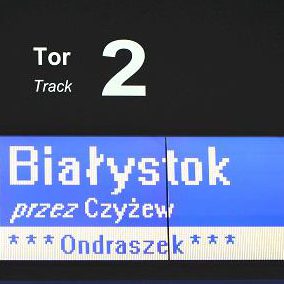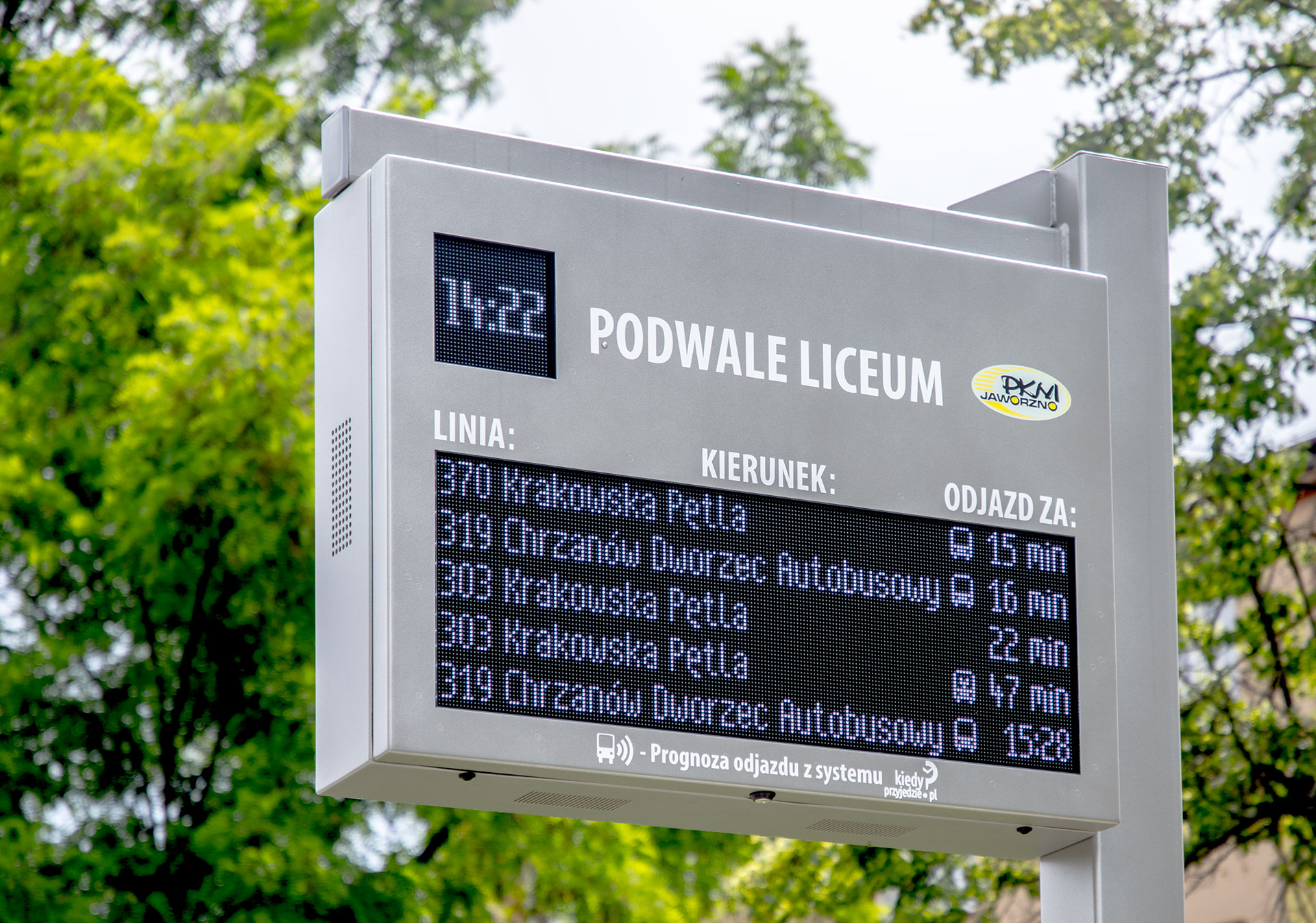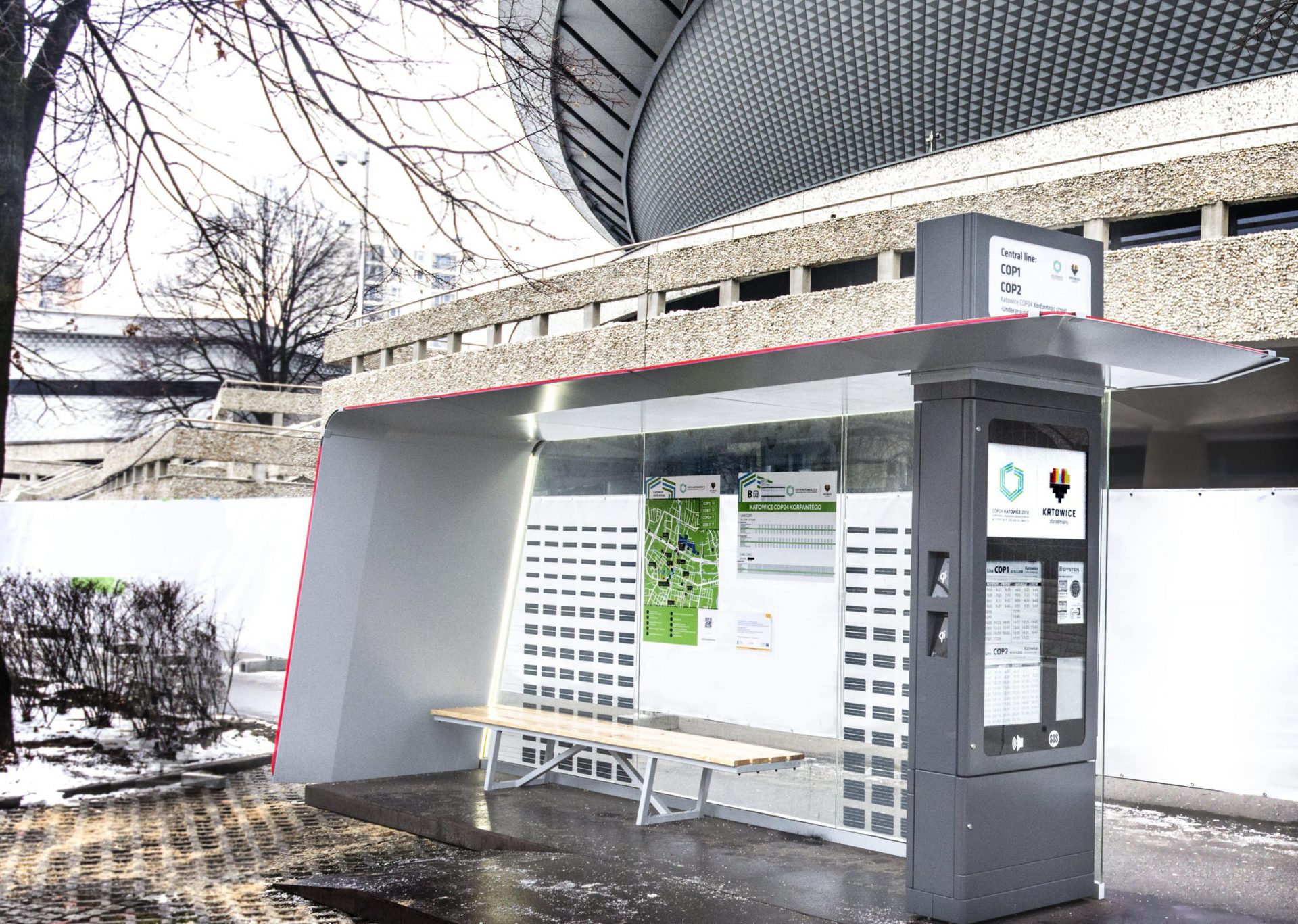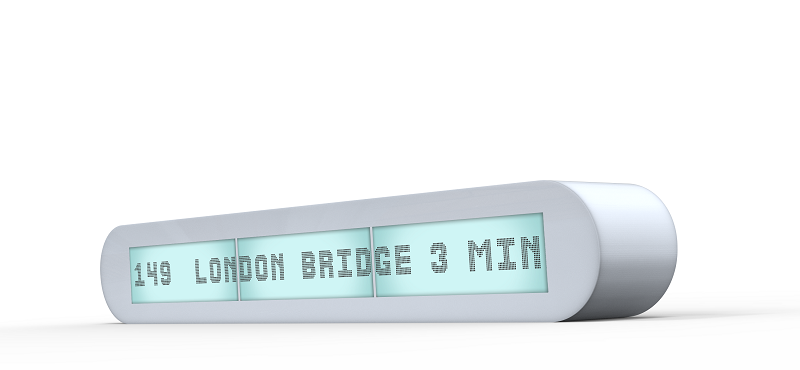Dysten is a Polish technology company. Our work requires continuous improvement, commitment of a large team of engineers and passion to turn high-tech dreams into efficient, reliable devices that improve the comfort of passengers, inhabitants, users. We know and use all important technologies, manufacturing high class devices. This is confirmed by successful implementations, 20 years of experience, international awards and a constantly growing number of orders.
While reading the information below, please remember that it does not replace contact with our Project Manager, who takes into account all aspects of the project and will suggest the best solution. Seemingly trivial details generate long-term consequences.
Raster and colour in LED displays
The decision to choose the parameters of LED displays for passenger information systems most often results from their superiority over LCD technology – thanks to higher brightness, durability and energy savings. However, the choice of LED technology is only the first of several important decisions. The next one concerns the image colour scheme – the device can have a single-colour display or display the full range of RGB colours. The correct raster size is equally important.
Pixel and raster
What is a raster in LED displays? It is the distance between the nearest pixels (points of the displayed image) specified in millimeters. A pixel on a monochrome screen is a single diode that can shine at different brightness, but only in one colour, such as amber. In RGB LED screens, a pixel is a single SMD diode that can change the color of light.
Dysten most often uses raster is 3, 4, 6 mm. What is the risk of a miscalculated raster? The words and numbers on the display will be blurred for passengers and in extreme cases illegible.
The most important readability
Knowing the destination of the device and the dimensions of the station hall or waiting room, we know the range of distances at which travellers can read information. Multiplying the size of a raster (pixel pitch) by 1000 allows to estimate the minimum distance.
For example, a screen with a grid of 4 millimetres will be readable at a minimum distance of 4 meters. A smaller distance will make the diodes become a group of points for our eyesight and it will take effort to put them into words or numbers.
Distance and legibility
It is most often assumed that the character displayed – a number or a letter – will be sufficiently well visible from a distance if its minimum size is 1/2000 of the viewer’s distance.
Free of charge support
Since there are many parameters to be taken into account when developing the assumptions, we invite you to contact us by e-mail at [email protected].
We [email protected] help you to choose the right parameters for your devices.









